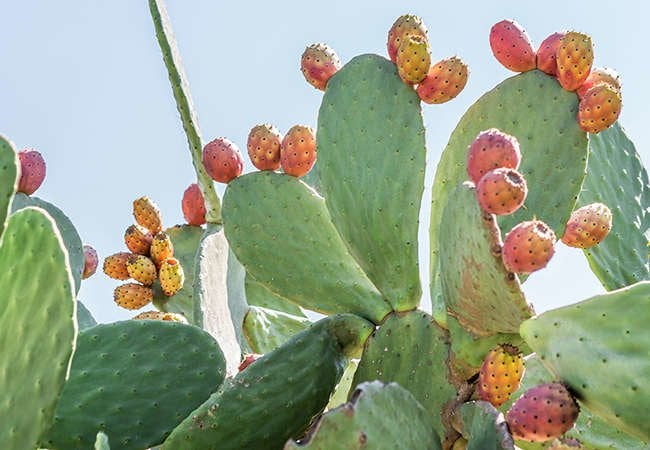

We may earn revenue from the products available on this page and participate in affiliate programs. Learn More ›
Home Advice You Can Trust
Tips, tricks & ideas for a better home and yard, delivered to your inbox daily.
By signing up you agree to our Terms of Service and Privacy Policy.
Yes, You Can Grow Cactus Plants At Home
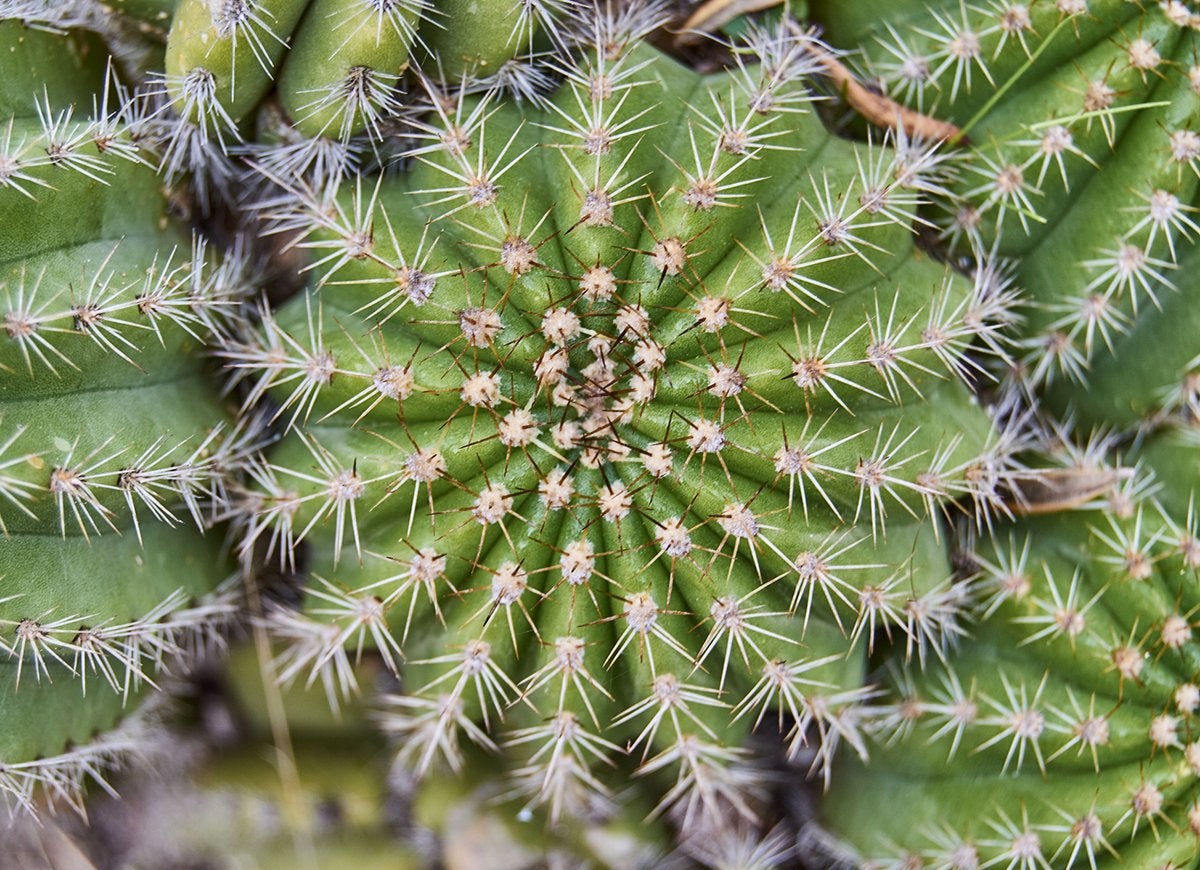
If you’re looking to add a little variety to your plant collection, consider cacti. Intimidated by sharp spines? Don’t worry. Some types of cactus plants have no spines at all. Plus, many cacti have fun and attractive features like white hairs, yellow flowers, or whimsical shapes. Even better, cacti grow slowly and require little maintenance. You won’t need to repot, prune, feed, or water cactus plants very often.
Other succulent plants are easily mistaken for cactus plants. Cacti are succulents with woody or herbaceous stems that contain chlorophyll. The fleshy stems store water and perform photosynthesis to feed the plant. Unlike other succulents, cactus plants have cushion-like areoles on the surface of the stems. Most cacti have spines. Cactus spines actually are modified leaves that protect the cactus plant from munching by wildlife and help to shade the surface of the plant.
Cacti make outstanding landscape specimens and houseplants if given the few simple care steps they need. For desert cactus plants, that means full sun outdoors or bright indoor light, soil that drains well, and low or moderate moisture. Jungle cacti have slightly different needs; they thrive in lower light conditions. Ahead, we cover all of the above! Read on to learn which of these 13 types of cactus plants may be best suited for your home.
Christmas Cactus
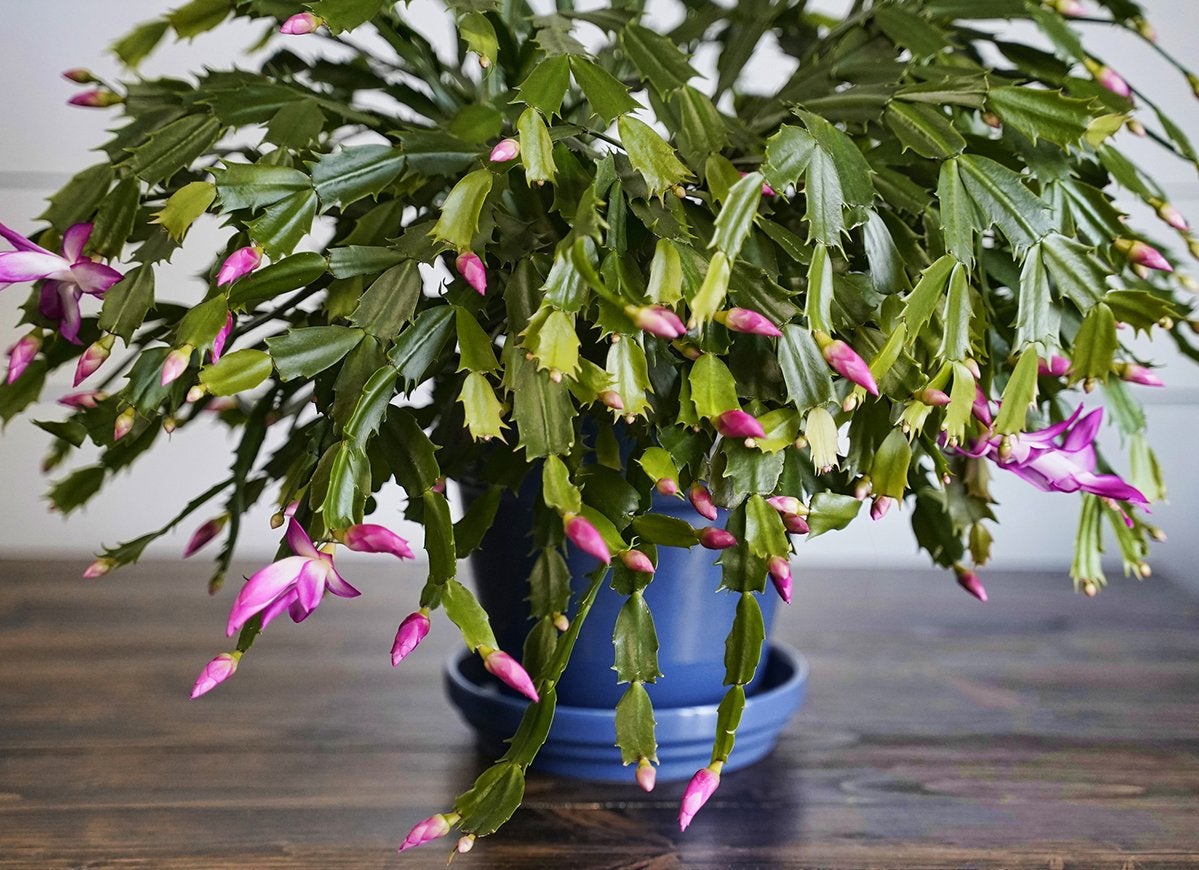
The Christmas cactus (Schlumbergera spp.) provides a welcome bit of color to homes during the drab days of winter. It also takes a spot on the list of the least stereotypical cacti. Christmas cactus resembles Easter cactus (Rhipsalidopsis) and sometimes is called shrimp cactus. The South American native grows in the shady forests of southeastern Brazil. An epiphytic plant, it grows on trees and other plants, or on rocks, not in the soil.
Christmas cacti bloom naturally twice a year. Their bloom cycles are thermo-photoperiodic, meaning temperature and day length trigger blooming. Flower buds begin to appear when temperatures fall consistently into the range of 40 to 50 degrees, or if they spend 14 hours per day in complete darkness.
USDA Zones: 10 through 12
Saguaro Cactus
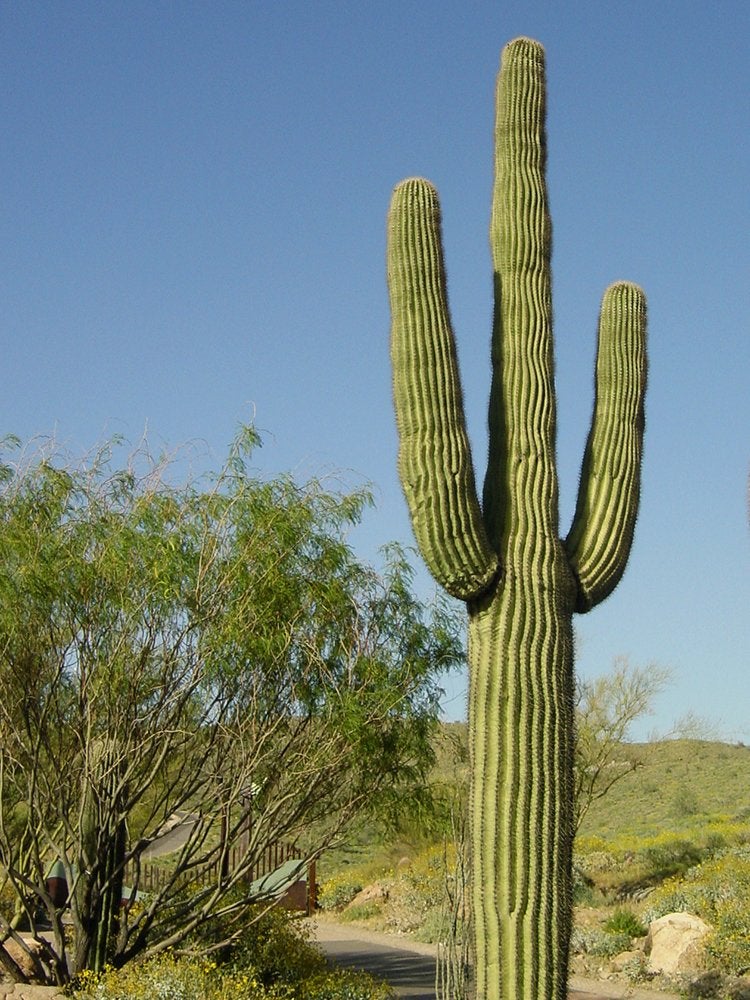
An enduring symbol of the American desert southwest, Saguaro cactus, Carnegiea gigantea, grows to truly enormous proportions. These natives of the Sonoran Desert of Mexico, California, and Arizona can reach heights up to 50 feet, with a girth of 10 feet. A saguaro of that size, when well hydrated, weighs about 12,000 pounds. These huge cacti grow quite slowly. They often reach 50 years old before flowering for the first time, and 75 years old before developing branches.
Saguaros can live for 200 years, anchored deeply into rocky soils where they can access water far below the soil surface. They provide nesting habitat and hunting perches for a diversity of birds, and pollen and nectar for insects and bats. Saguaro cacti also make excellent low-maintenance houseplants.
USDA Zones: 8 through 11
San Pedro Cactus
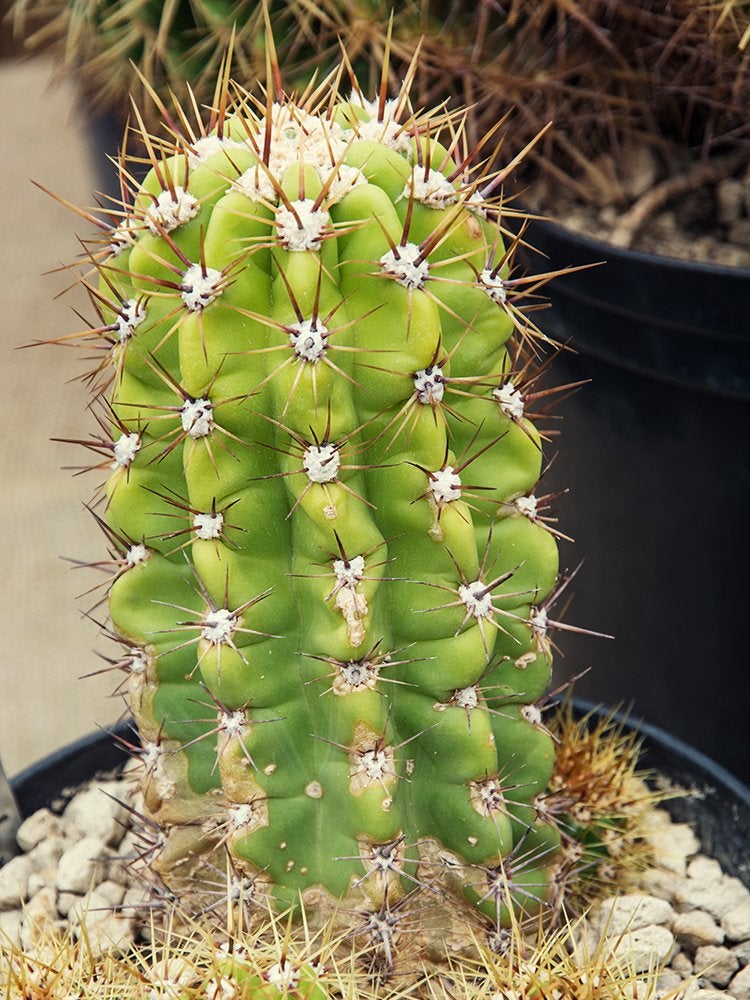
Echinopsis pachanoi is the botanical name for San Pedro cactus. This native of the Andes Mountains in Argentina, Bolivia, Chile, Ecuador, and Peru grows at elevations between 6,600 and 9,800 feet above sea level. Gardeners around the world cultivate San Pedro cactus as an easy-to-grow houseplant or a fast-growing landscape cactus for mild climates.
In a temperate growing zone, the San Pedro is drought tolerant and suitable for xeriscaping. It also performs well in areas of fairly high rainfall, provided it grows in deep, well-draining soil.
USDA Zones: 8 through 10
Barrel Cactus
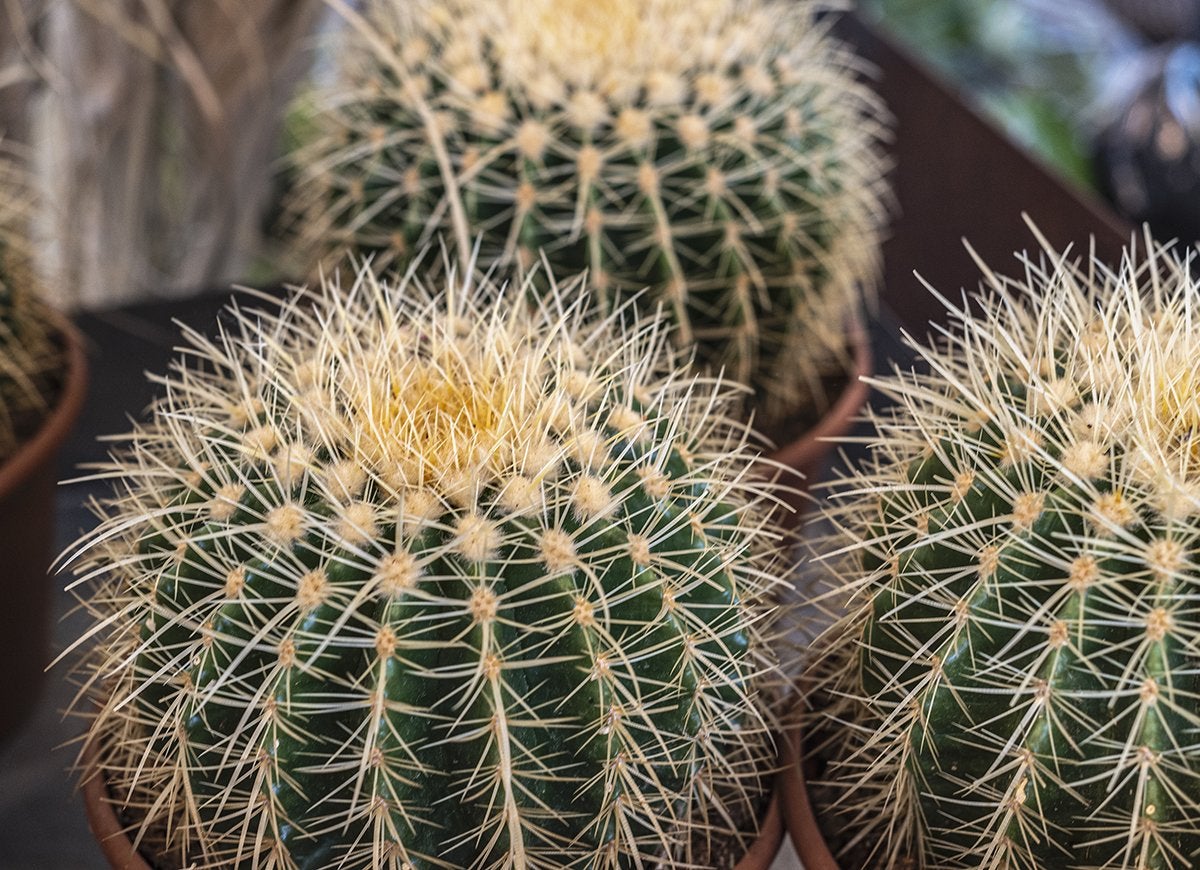
Barrel cactuses, Echinocactus spp. and Ferocactus spp., are plump, round cacti that come from the North American desert southwest. They live up to 100 years, and grow to less than 3 feet tall. Barrel cacti make popular ornamental plants, grown for their yellow, orange, pink, or red flowers.
Plant nurseries offer a range of barrel cacti. The spines alone show nearly endless variety. They can grow long, dense, and sharp, or they might cluster tightly and have cottony filament covers, and some barrel cactus types have few to no spines. Flowers add to the ornamental value of barrel cacti, and the plants in this species offer a variety of flower colors and textures.
USDA Zones: 9 through 11
Fairy Castle Cactus
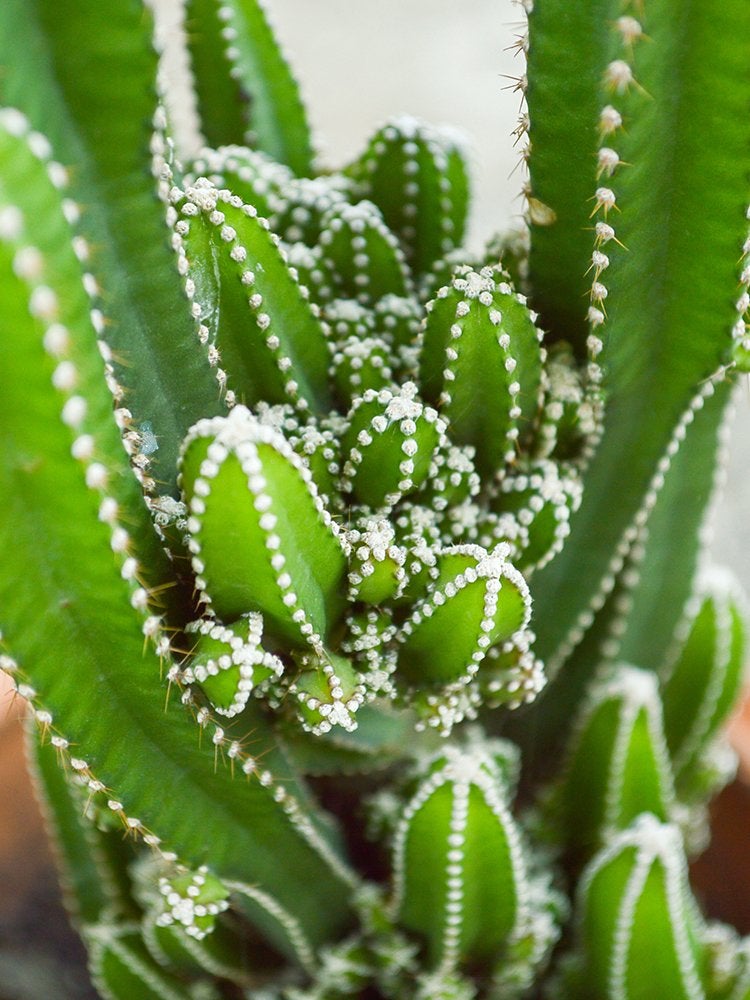
Fairy castle cactus is a unique name for an unusual cactus type also known as Cereus tetragonus. This North American native cactus got its common name from its many-stemmed clumps that vary in height and appear as tiny towers and turrets. The ribs are distinct and the spines are short and dense.
Fairy castle cactus grows very slowly, eventually attaining 6 feet. The green flesh turns brown with age. The clustered growing tips extend and eventually branch out as they grow. Rarely does this cactus flower. When it does, it produces large white flowers that open at night.
USDA Zones: 10-11
Related: 10 Plants You Can Grow Without Soil
Prickly Pear Cactus
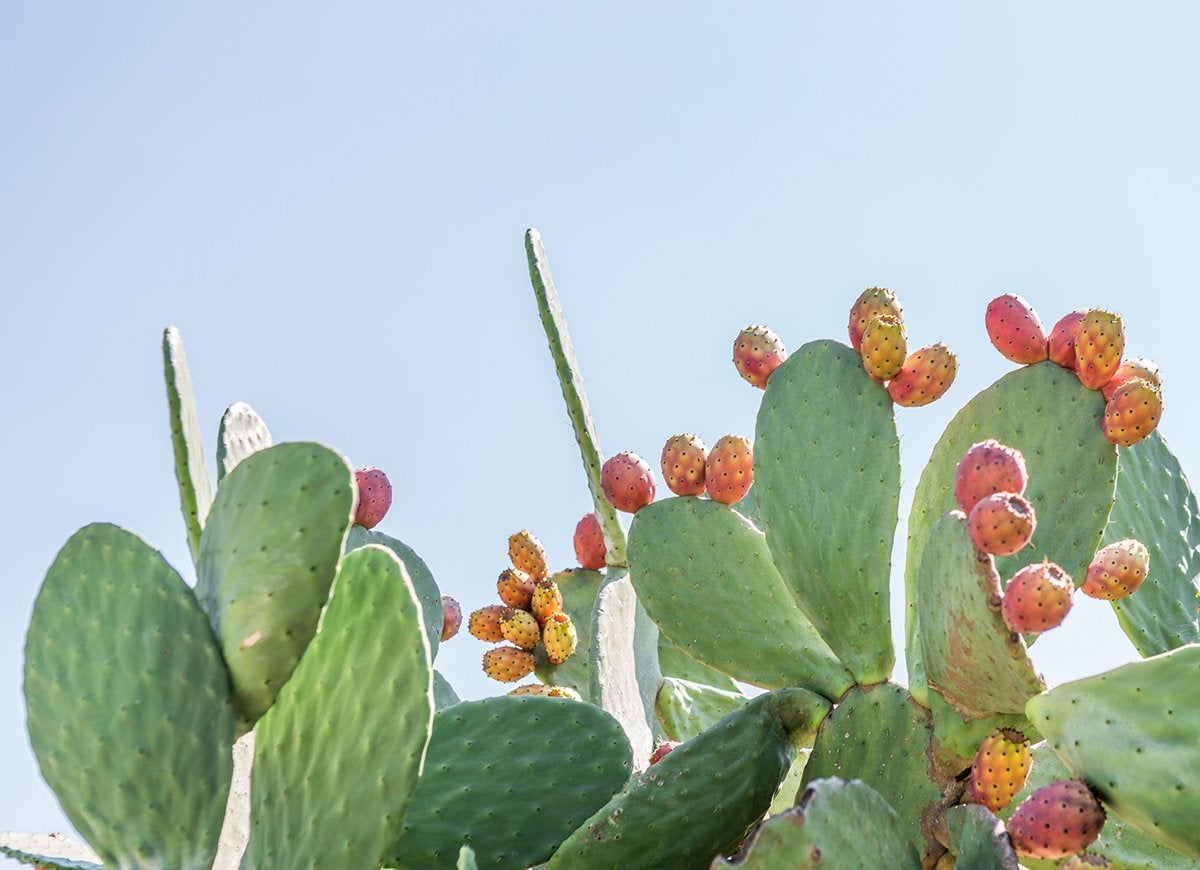
Prickly pear cacti come from the Opuntia genus, and include some of the most cold-tolerant cactus species in the world, with several species that can withstand temperatures below zero degrees. Gardeners throughout North America grow prickly pears in dry, sunny landscape locations and indoors in well-lit rooms. They flower and fruit abundantly with little care.
Nurseries grow dozens of prickly pear cultivars, mostly for their ornamental value. In addition to the fleshy lobes and varying spine patterns, these easy-to-grow cacti produce flowers and fruit prolifically. People have cultivated these plants and consumed the edible fruits since prehistoric times.
USDA Zones: 2 through 10
Cholla Cactus
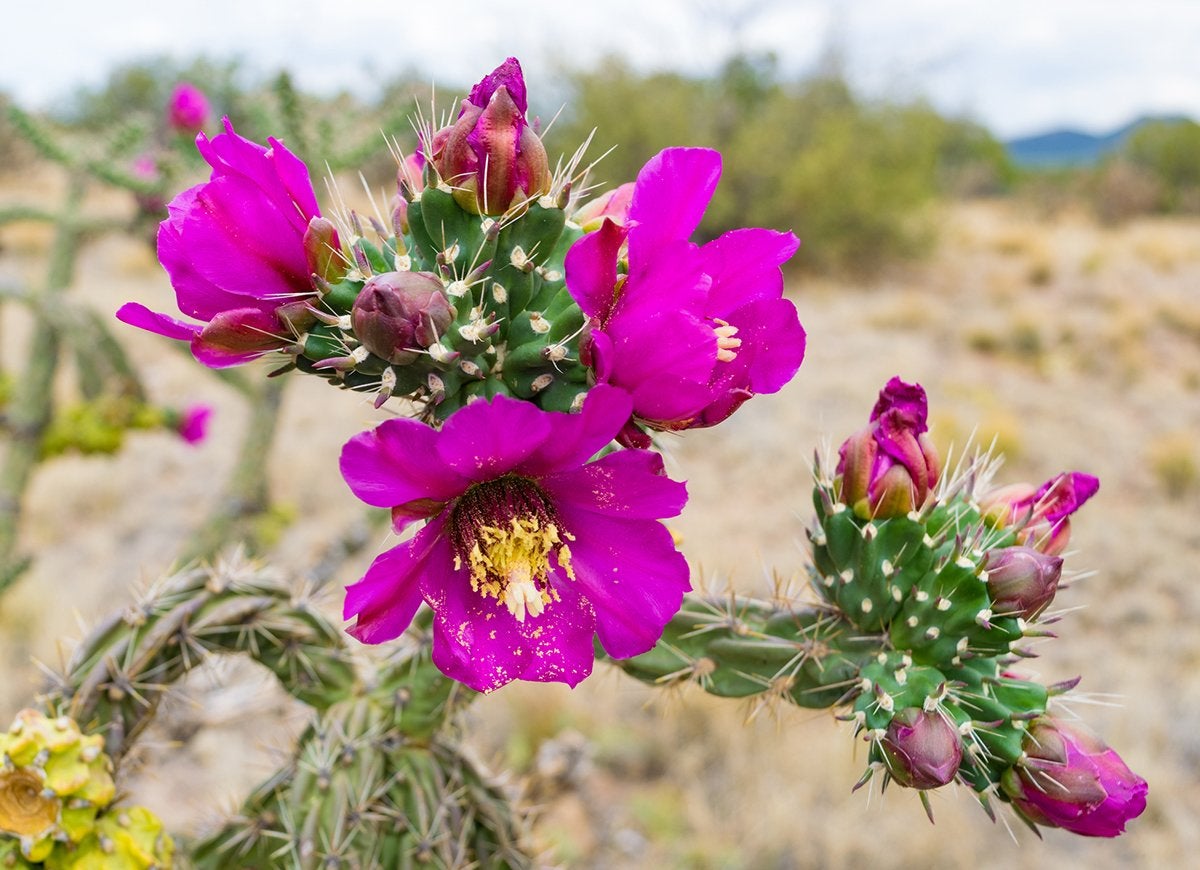
Cholla cacti, Cylindropuntia spp., are closely related to prickly pears but have a more restricted range within the American southwest. Cholla cacti grow rounded or elongated cylindrical stems connected by segmented joints.
Grow cholla cactus with care, and allow plenty of clearance for moving around the plants. Dense spines covered in paper sheaths appear all over chollas, and are colorful in some species. Cholla cactus makes an excellent addition to xeriscaped or Southwestern-style gardens in sunny dry locations.
USDA Zones: 5 through 9
Star Cactus
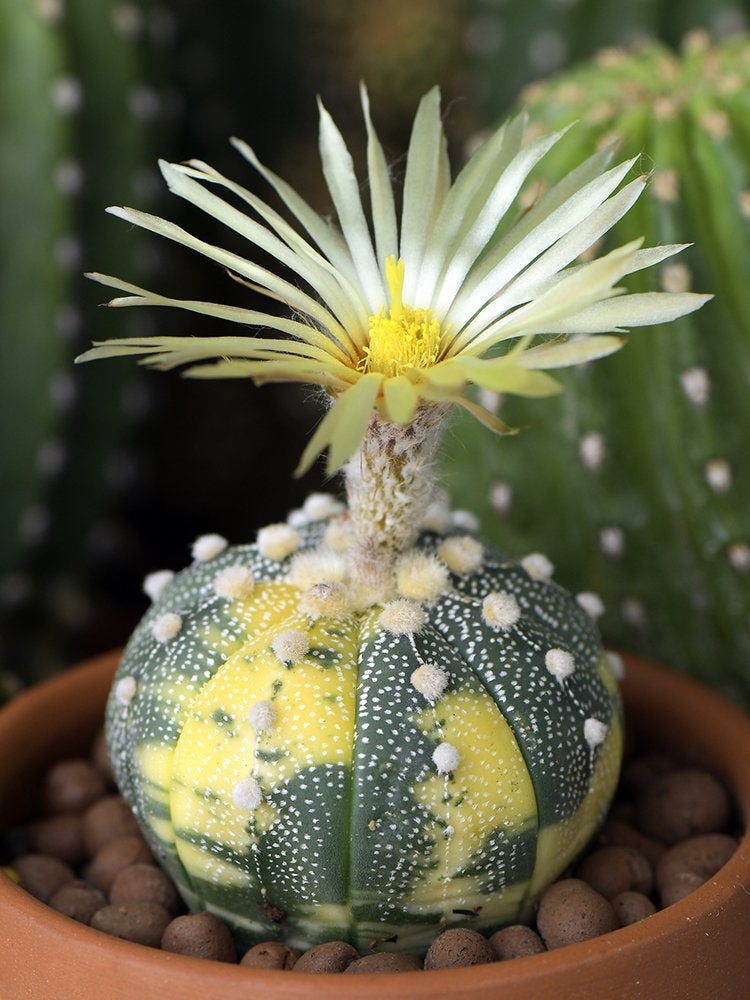
Astrophytum asterias, or star cactus, grows to only about 2 inches tall and 5 inches wide. It grows attractive areoles (spine pads) along its ribs, but no spines. The greenish brown body is covered with white scales, adding to its ornamental value. Star cactus flowers are yellow with a reddish base.
Unfortunately, star cactus has been loved to near extinction by cactus collectors in its small native range of Texas and northern Mexico. Endangered in the wild, this beautiful cactus has suffered from a combination of habitat loss and wild collection. Still, many reputable growers offer star cacti for purchase.
USDA Zones: 8 through 9
Feather Cactus
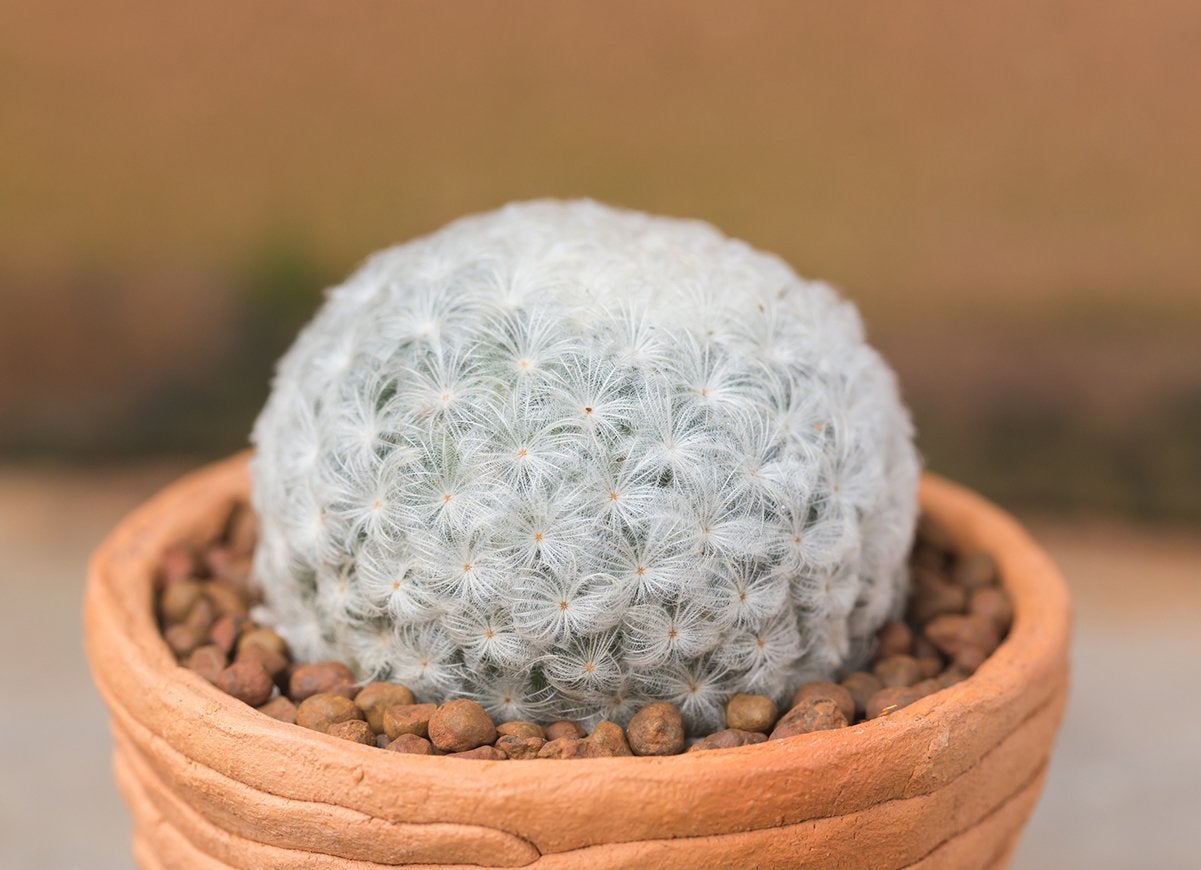
Feather cactus, Mammillaria plumosa, is named for its covering of wispy white filaments that serve both ornamental and functional purposes. The filaments shade this short, squatty cactus from the intense sunshine of its native Nuevo Leon, Mexico. Feather cactus grows to only 3 inches tall and up to 16 inches wide. As a houseplant, feather cactus grows best in a wide, shallow container. Avoid wetting the “feathers” when watering, and feed twice a year with cactus plant food.
USDA Zones: 9 through 11
Pencil Cactus
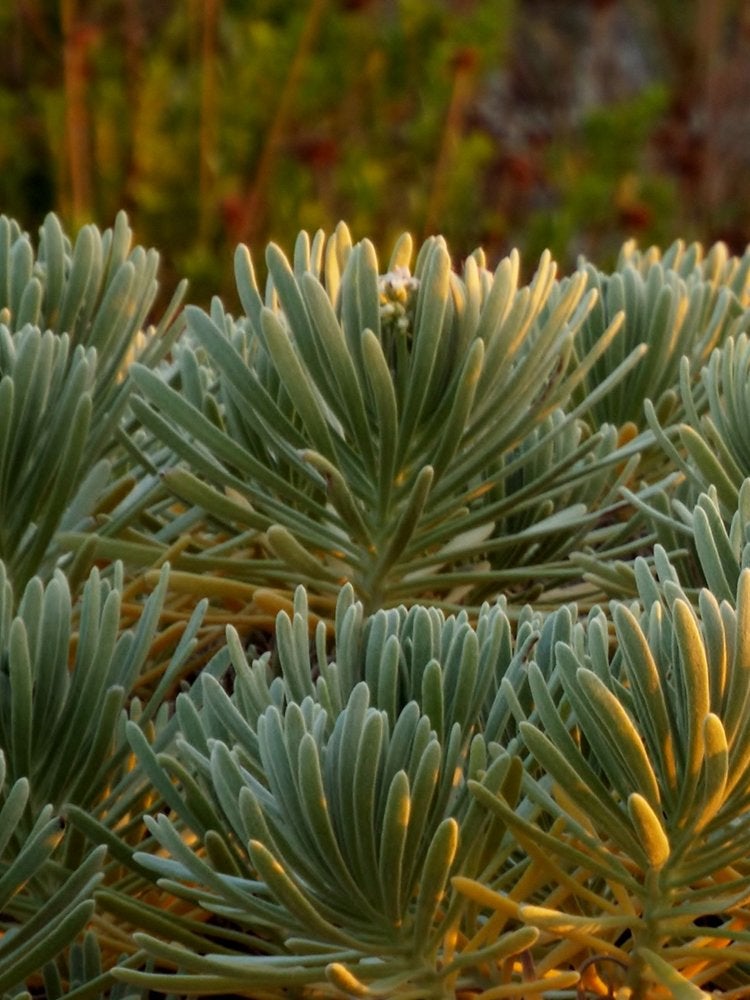
Pencil cactus, Euphorbia tirucalli, is not a true cactus, but a succulent relative of poinsettia and rubber plant, with similar appearance and growing requirements to cacti. This native of Africa and India grows to more than 30 feet tall outdoors. As a houseplant, growers can easily maintain its growth to ceiling height. Pencil cactus makes an interesting xeriscape landscape specimen where temperatures stay above 25 degrees. Growers can choose from solid green, red-tinted, orange, and chartreuse cultivars.
USDA Zones: 9 through 11
Jumping Cactus
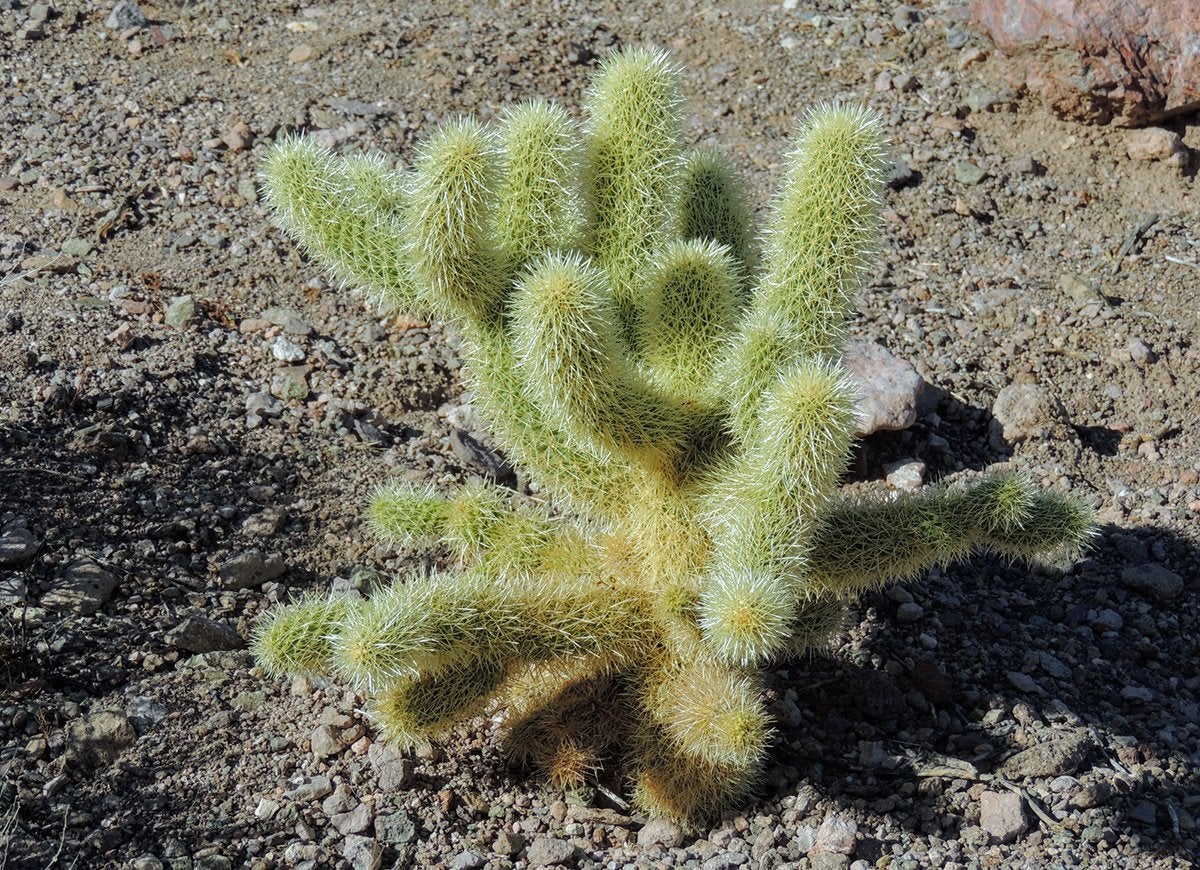
Jumping cactus, Cylindropuntia fulgida, is a species of cholla cactus with loosely attached joints. With just the slightest touch, the loose segments attach to passersby using their countless, formidable thorns. Jumping cactus is a native of the American Southwest. Its attractive appearance might suggest the cactus makes a fine landscape specimen, but only if planted in an isolated spot. This type of cactus is best seen and not touched.
USDA Zones: 8 through 11
Golden Barrel Cactus
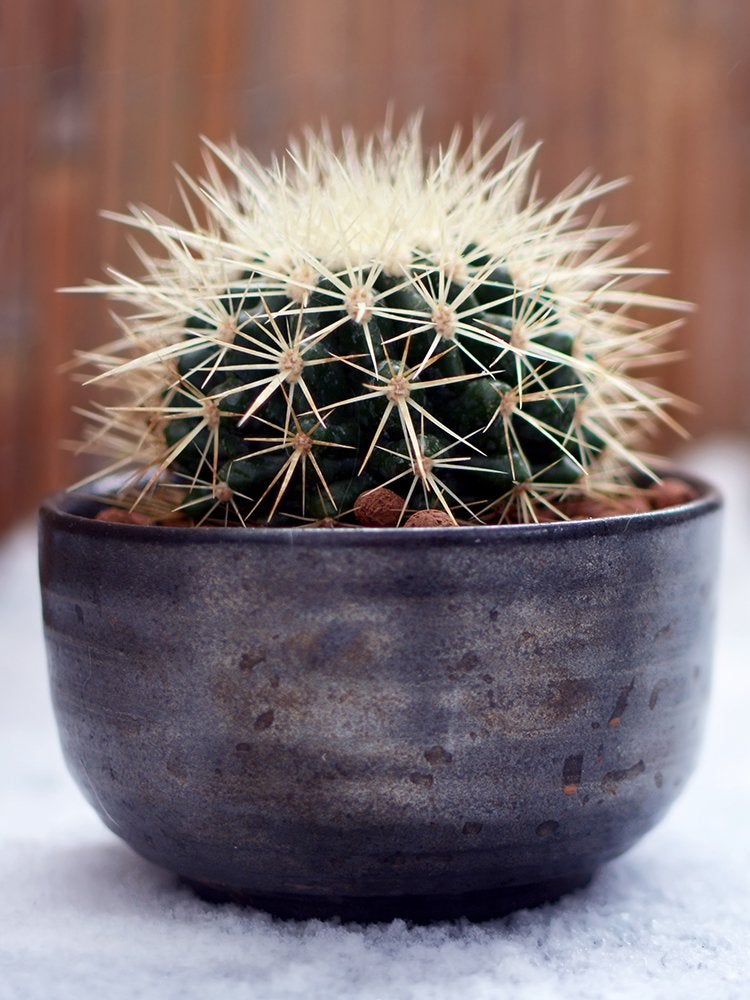
Golden barrel cactus, Echinocactus grusonii, comes from east-central Mexico, where it is rare and endangered in the wild. Golden barrel grows in the shape of a flat-topped globe, with gently curved golden spines neatly lining the ribs. Purchase golden barrel cactus from a reputable nursery to grow in an arid landscape or as a houseplant. It proves a wonderful addition to xeriscaped and desert-themed gardens. Plant golden barrel cacti in solid masses or clustered among other desert plants.
USDA Zones: 9 through 11
Related: Count On These 25 Indoor Plants for Easy Color Year-Round
Moon Cactus
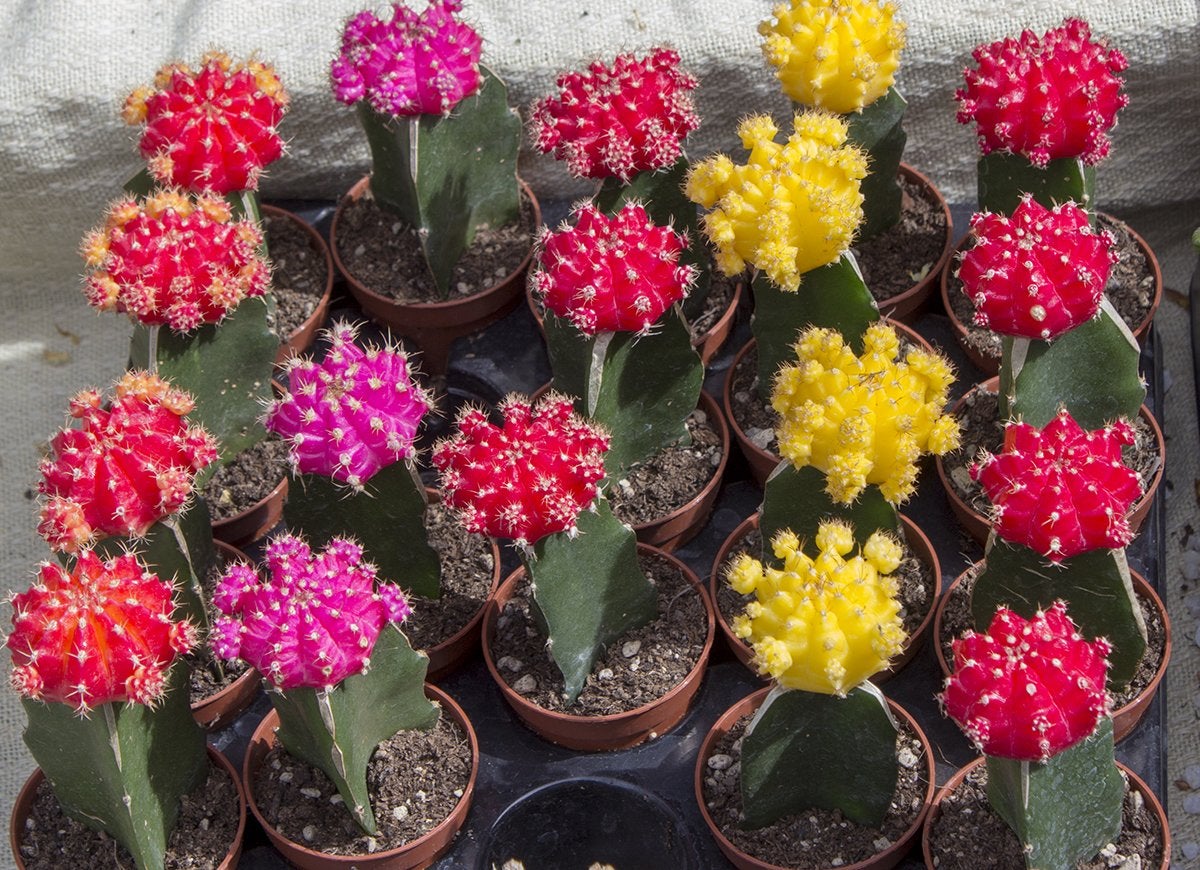
Moon cactus is a grafted combination of two distinct plant species. The bottom, or stock, plant is typically a Hylocereus species. The star of the show is the bright yellow, red, orange, pink, or white top, or scion plant, a Gymnocalycium mihanovichii. The colorful cactus on top lacks chlorophyll, a condition that reveals the bright underlying pigment, and requires the services of the succulent beneath for sustenance. Grafted moon cactus plants stay small, under 6 inches tall. They require very little maintenance other than occasional watering.
USDA Zones: 11 through 12

Our Best Advice for Beginner Gardeners
We’ll help you set up your first garden—whether that’s a few pots on your patio, a raised bed, or an in-ground plot out back—and select the right plants for your soil and region.